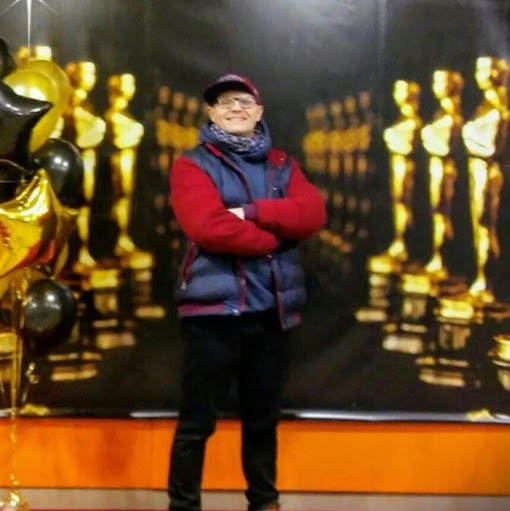Darius Subacius
age ~59
from Groton, MA
- Also known as:
-
- Daruis Subacius
- Darius S
- Darivs S
- Phone and address:
-
85 Reedy Meadow Rd, Groton, MA 01450
(978)4482981
Darius Subacius Phones & Addresses
- 85 Reedy Meadow Rd, Groton, MA 01450 • (978)4482981
- 424 Stinaff St, Kent, OH 44240
- 1422 Shetland Dr, Allen, TX 75013 • (972)3967203
- Richardson, TX
- Boulder, CO
- Waltham, MA
- Broomfield, CO
- 85 Reedy Meadow Rd, Groton, MA 01450 • (978)3760821
Work
-
Position:Machine Operators, Assemblers, and Inspectors Occupations
Education
-
Degree:Bachelor's degree or higher
Emails
Us Patents
-
Integrated Adaptive Chromatic Dispersion/Polarization Mode Dispersion Compensation System
view source -
US Patent:6889011, May 3, 2005
-
Filed:Nov 2, 2001
-
Appl. No.:10/004332
-
Inventors:John A. Fee - Garland TX, US
Darius Subacius - Allen TX, US
Brian T. Teipen - Richardson TX, US -
Assignee:MCI, Inc. - Ashburn VA
-
International Classification:H04B010/12
-
US Classification:398148, 398149, 398152, 398161, 398159
-
Abstract:The present invention is directed to an integrated system for performing dispersion compensation on wavelength channels in WDM or DWDM transmissions. The system includes a tunable integrated dispersion compensation module that performs chromatic dispersion compensation and polarization mode dispersion compensation on each of the wavelength channels in the transmission. Feedback is used to adjust the tunable integrated dispersion compensation module until receiver performance is optimized.
-
Active Stabilization Of A One-Way Qkd System
view source -
US Patent:7587049, Sep 8, 2009
-
Filed:Dec 8, 2004
-
Appl. No.:10/580959
-
Inventors:Alexel Trifonov - Boston MA, US
Anton Zavriyev - Swampscott MA, US
Darius Subacius - Groton MA, US -
Assignee:MagiQ Technologies, Inc. - New York NY
-
International Classification:H04L 9/00
H04K 1/00
G01B 9/02 -
US Classification:380263, 380260, 380278, 380283, 380 44
-
Abstract:A one-way stabilized QKD system () that utilizes a control signal (CS) and a quantum signal (QS) that travel the same path through the system from a first QKD station (Alice) to a second QKD station (Bob). The control signal is detected at Bob and used to stabilize Bob's side of the interferometer against phase variations. The system also includes a polarization control stage () that controls (e. g. , scrambles) the polarization of the photons entering Bob. The combination of the polarization control and the active phase stabilization of the interferometer at Bob's end allows for the stable operation of the interferometer when used as part of a one-way QKD system.
-
Optical Signal Transmission System And Transmitter
view source -
US Patent:20030219256, Nov 27, 2003
-
Filed:Aug 2, 2002
-
Appl. No.:10/211709
-
Inventors:Farhad Hakimi - Watertown MA, US
Hosain Hakimi - Watertown MA, US
Darius Subacius - Groton MA, US -
International Classification:H04B010/12
-
US Classification:398/149000
-
Abstract:An optical communication system and method are disclosed. Optical communication may be implemented with less complicated and costly components yet use RZ-like signal formats. The method may also be adapted to provide communication with beneficial phase relationships among optical pulses. An originating signal has a plurality of pulses, each pulse defined by a leading edge and a falling edge. A plurality of first optical pulses are created and transmitted on an optical communication medium in which each first optical pulse corresponds to a leading edge of a corresponding pulse of the originating signal. A plurality of second optical pulses are created and transmitted on an optical communication medium in which each second optical pulse corresponds to a falling edge of a corresponding pulse of the originating signal.
-
Method And Apparatus For Generating Optical Pulses For Qkd
view source -
US Patent:20080130888, Jun 5, 2008
-
Filed:Sep 12, 2005
-
Appl. No.:11/662560
-
Inventors:Alexei Trifonov - Boston MA, US
Darius Subacius - Groton MA, US -
International Classification:H04K 1/00
H04L 9/00 -
US Classification:380256, 380277
-
Abstract:Methods and apparatus for generating coherent optical pulses (P, P) in a quantum key distribution (QKD) station (Alice-N) of a QKD system () without using an optical fiber interferometer () are disclosed. The method includes generating a continuous wave (CW) beam of coherent radiation (R) having a coherence length LC and modulating the CW beam within the coherence length. The invention obviates the need for an interferometer loop to form multiple optical pulses from a single optical pulse, thereby obviating the need for thermal stabilization of the interferometer loop at the QKD station Alice-N.
-
Diffraction Grating With Electrically Controlled Periodicity
view source -
US Patent:61884626, Feb 13, 2001
-
Filed:Sep 2, 1998
-
Appl. No.:9/145506
-
Inventors:Oleg D. Lavrentovich - Kent OH
Darius Subacius - Kent OH -
Assignee:Kent State University - Kent MI
-
International Classification:G02F 1133
G02F 1137 -
US Classification:349201
-
Abstract:The present invention is directed to liquid crystal diffraction gratings with electrically controlled periodicity. An electrical field is applied to liquid crystal device wherein the liquid crystals align to form a diffraction grating. The period of the diffraction grating is varied by changing the applied electrical field. The diffraction grating therefore has a period that can be varied by an electrical field.

Darius Subacius
view sourceFriends:
Vytautas Rays, Vladas Tiskus, Giovana Baria, Laurynas imas, Daina Schmidt
Other Social Networks

Cool Run 14th Grot Road ...
view sourceNetwork:
Ning
... 77/95 f3039 pepperell ma 32:59 10:39 527 5495 kestas subacius 22/32 ... scharmer 4/7 m0108 groton ma 33:02 10:40 530 322 darius subacius ...
Googleplus

Darius Subacius
Youtube
Get Report for Darius Subacius from Groton, MA, age ~59





